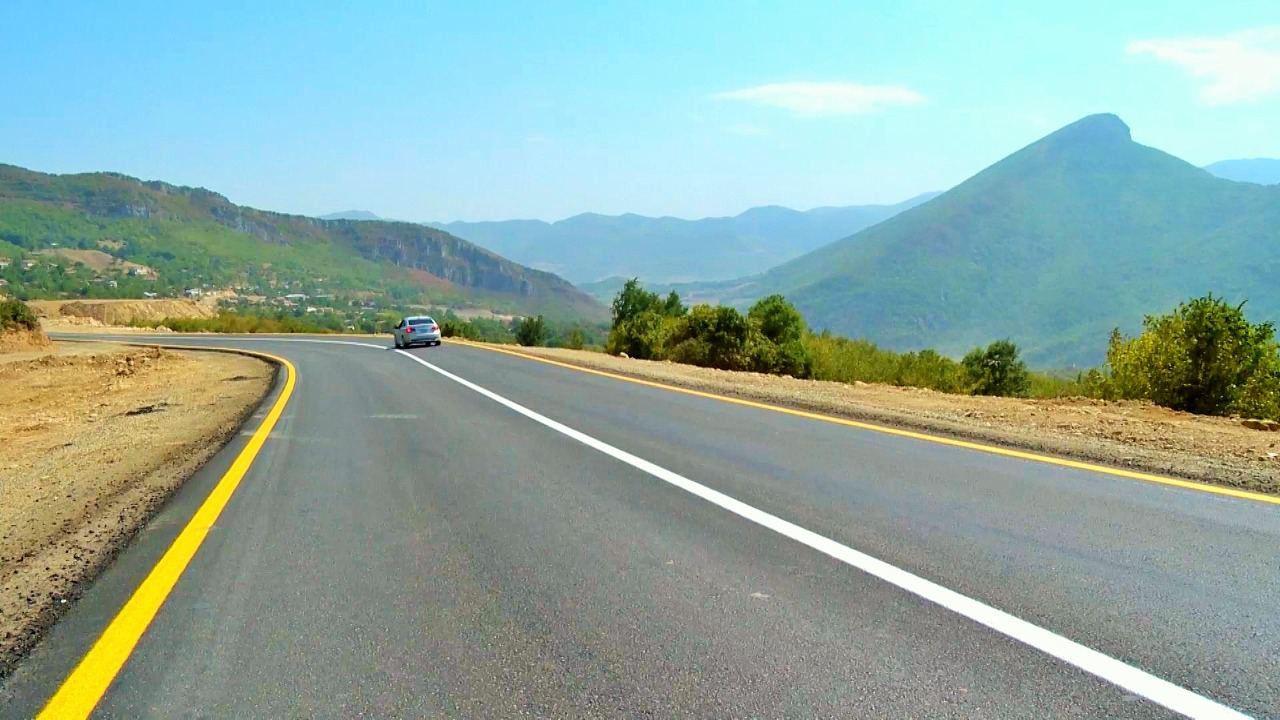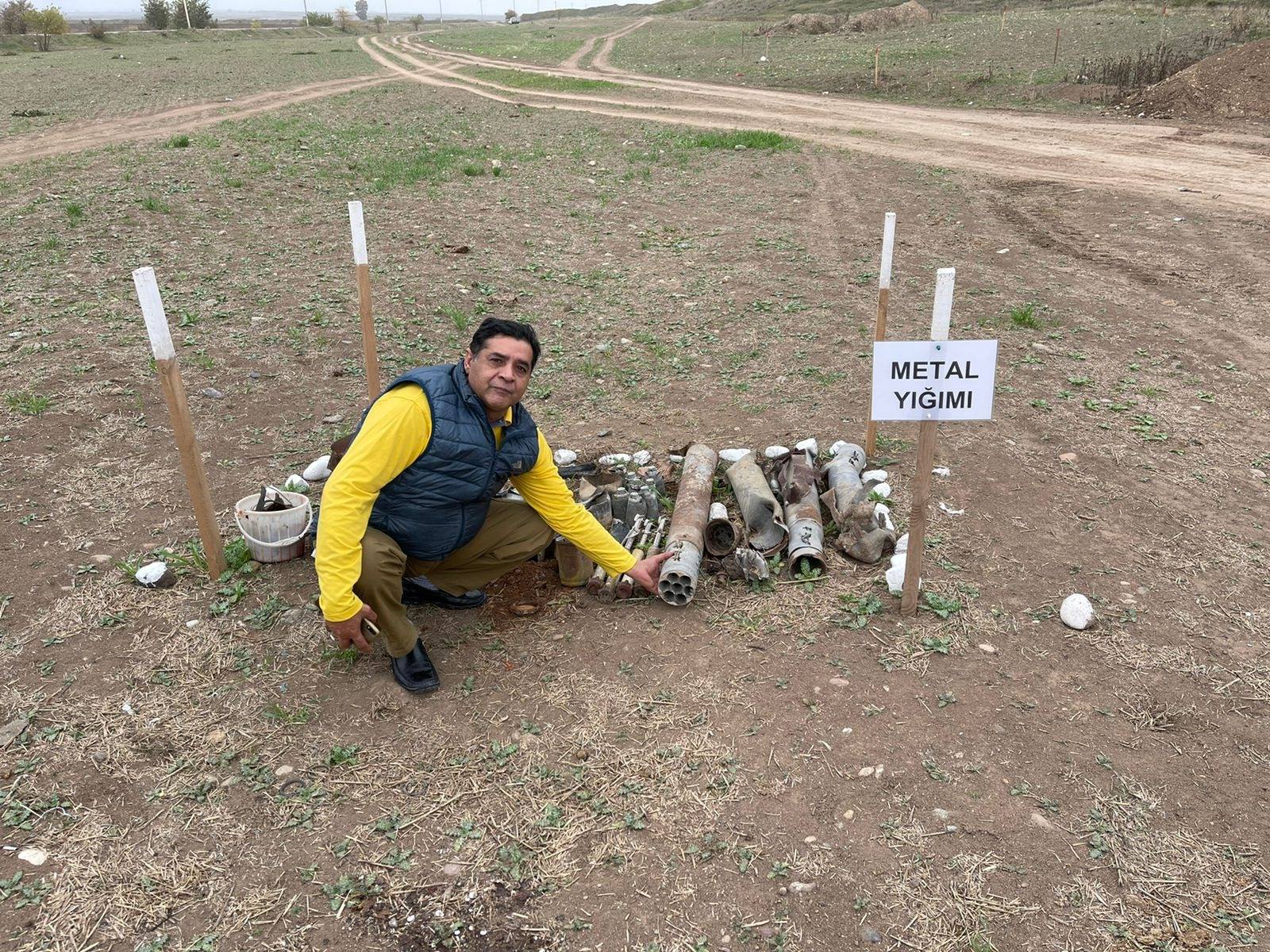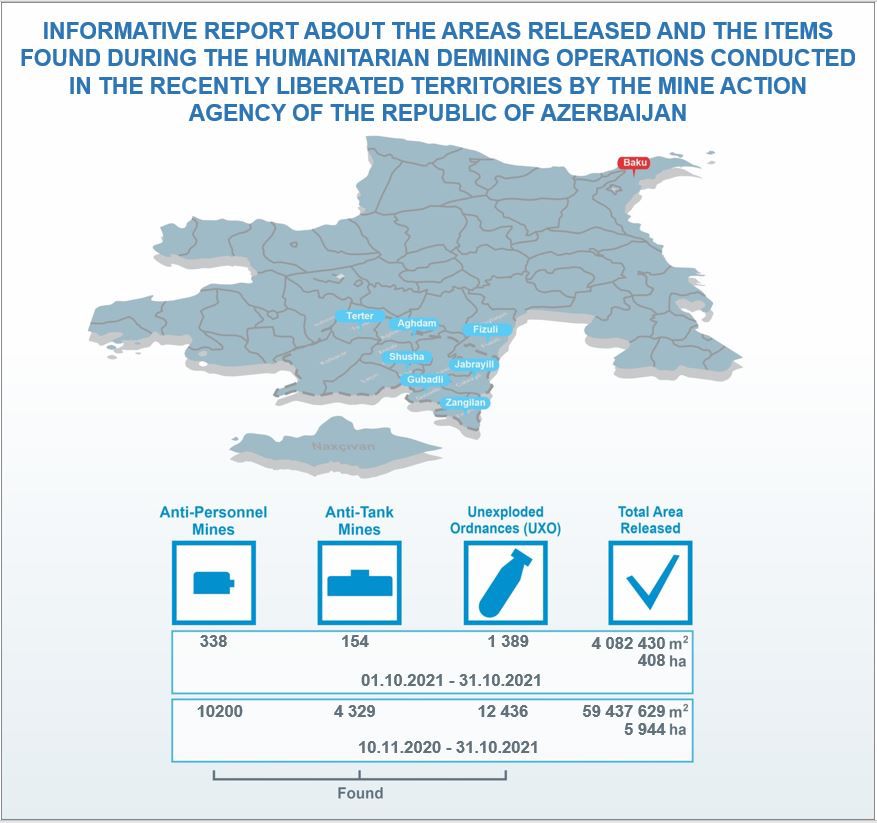Monitoring Desk: “President of the of Azerbaijan Ilham Aliyev and First Lady Mehriban Aliyeva inaugurated Victory Road on November 8, 2021”, reports State News Agency Azertac.
The construction of the “Victory Road”, named so by Azerbaijani President Ilham Aliyev to commemorate the path used by Azerbaijani Armed Forces during the liberation of Shusha city from the Armenian occupation.
The construction of two-lane Victory Road began 10 months ago and the work was completed on a 101-km long patch. It starts from the Hajigabul-Minjivan-Zangezur corridor and stretches to Shusha, the main city of Karabakh.
The Victory Road passing through the territory of Fuzuli, Khojavand, Khojaly, and Shusha districts now connect more than 20 settlements, including the cities of Fuzuli and Shusha.
Azerbaijan’s city of Shusha in Karabakh has remained under Armenian occupation since 1992, during the times of the first Karabakh war. The city was liberated from occupation in 2020, during the second Karabakh war. Following the liberation, Azerbaijan launched the construction of the “Victory Road”.
Azerbaijan is following a multipronged strategy to develop liberated regions —the construction and minesweeping that is necessary to start developmental works. There are over one million anti-personnel and anti-Tank mines planted by Armenia in formerly occupied territories while Armenia says that it has planted over 92,000 anti-personnel mines the Fuzuli and Zangilan regions while surrounding the areas to Azerbaijani army during historic Armenian defeat. However, Azerbaijan believes that maps provided by Armenia on July 3, 2021, upon the initiative of the Russian Federation are not complete and number of mines planted by Armenia is much larger than it (Armenia) it is claiming. Azerbaijan believes more than one million landmines are planted in occupied Azerbaijani territories over nearly 30 years by Armenia.
 “Just imagine Armenia planted anti-personnel mines almost in every street and village when the land was under illegal occupation of Armenia. Just imagine how many years and how many resources would be needed to clear the entire area?
“Just imagine Armenia planted anti-personnel mines almost in every street and village when the land was under illegal occupation of Armenia. Just imagine how many years and how many resources would be needed to clear the entire area?

The illegal occupation of Azerbaijani areas by Armenia had a long history and the situation became exceptionally grave after the dissolution of the former Soviet Union in 1991. Armenia occupied 20 percent of Azerbaijan’s internationally recognized territories and killed over 30,000 Azerbaijanis while over one million Azerbaijanis had to leave their lands under brutal ethnic cleansing policy conducted by Armenia,” commented Chief Editor DND News Agency Agha Iqrar Haroon who visited Shusha through Victory Road.
During the 44-days war, Azerbaijan liberated over 300 settlements, including the cities of Jabrayil, Fuzuli, Zangilan, Gubadli, and Shusha, from nearly 30-year-long illegal Armenian occupation.
The war ended in a tripartite statement signed on November 10 by Armenia, Azerbaijan, and Russia. Under the statement, Armenia also returned the occupied Aghdam, Kalbajar, and Lachin districts to Azerbaijan.

Now the Azerbaijan National Agency for Mine Action (ANAMA) is cleaning the land.
A total of 144 Azerbaijani citizens have been killed or injured by Armenian landmines in the liberated lands after the ceasefire was signed on November 10, 2020. On June 4, 2021, two journalists and a government official in Azerbaijan lost their lives in a mine explosion in the liberated Kalbajar district.

During the 44-day conflict, Azerbaijan liberated several cities and nearly 300 settlements and villages from the nearly three-decade occupation.
On Nov. 10 last year, the two countries signed a Russian-brokered agreement to end the fighting and work toward a comprehensive resolution.
On January 11, 2021, the leaders of Russia, Azerbaijan, and Armenia signed a pact to develop economic ties and infrastructure to benefit the entire region. It included the establishment of a trilateral working group in Karabakh. Experts say that clearing the unexploded ordnance is estimated to take five or six years, while clearing mines could take even longer, between 10 to 13 years.




